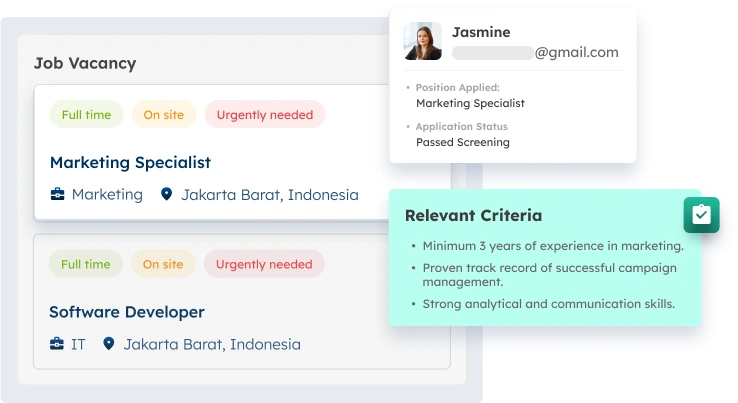Getting a new employee started is about so much more than just a first-day orientation. A truly effective onboarding process is a strategic journey that integrates new hires into the company culture and sets them up for success from day one. It’s a complex system, involving multiple steps and departments to get right.
According to MOM, the Onboard Programme at the Onboard Centre introduces workers in the CMP industries to Singapore’s social norms and laws, as well as dormitory and communal living, via the Settling-in Programme (SIP). This organized method guarantees that personnel are well-prepared and meet local standards.
This article defines employee onboarding, why it is critical for business growth, and how to optimize the process to improve retention, engagement, and overall organizational performance for long-term success.
- Onboarding is the process of incorporating a new person into your company’s culture. It goes beyond a simple meet-and-greet to make the new employee feel welcomed, prepared, and supported
- The key phases of onboarding, pre-boarding, orientation, training, and development provide a structured pathway for new hires from offer acceptance to full integration.
- Tips for optimizing your process are preparing new hires for their role, setting clear expectations, and establishing a system for regular feedback and follow-up.
- With ScaleOcean’s HRIS software, you can automate and streamline these critical onboarding tasks, ensuring a consistent and impactful experience for every new employee.

What Is Onboarding?
Onboarding is the process of incorporating a new person into your company’s culture. It goes beyond a simple meet-and-greet to make the new employee feel welcomed, prepared, and supported, which is critical for talent management and seamless transitions.
A strong onboarding method teaches employees about their roles, expectations, and how they contribute to the company’s success. Similarly, a well-managed offboarding process ensures departing employees leave on good terms, boosting performance and job happiness. This strategic process enhances performance and job happiness, making it a worthwhile investment for both the person and the firm.
Why Effective Onboarding is Critical
The first few weeks are crucial for new employees, shaping their view of the company. A strong onboarding experience increases retention, while a lack of structure leads to disengagement and turnover. Effective onboarding is vital for business success. If you already understand the meaning of onboarding, here are the key reasons why:
1. Boosts Employee Retention
When new hires feel genuinely supported and valued right from the start, they’re much more likely to stick around. A positive onboarding experience really signals that the organization is invested in their individual success, which then helps build loyalty and a stronger commitment to both their role and the company’s overall mission.
High turnover is, frankly, a massive drain on resources for any talent management team, so improving retention is always a top goal for HR. This is why a structured onboarding process truly stands out as one of the most effective tools for reducing early attrition, helping new team members feel connected and secure in their choice to join.
2. Increases Productivity
A thoughtfully designed onboarding program really does get new employees up to speed quite a bit faster. When you give them clear instructions, all the necessary tools, and tailored training for their specific role, it definitely cuts down on the time it takes for them to become fully productive and start contributing to team goals more quickly.
Without proper guidance, new hires can easily spend weeks just trying to piece things together on their own, which is both inefficient and pretty frustrating for everyone involved. A solid onboarding process offers that clear roadmap, letting them focus on learning their job and making a truly meaningful impact right from the start.
3. Improves Engagement
Employee engagement, really, begins on day one, and a positive onboarding experience is absolutely crucial for cultivating it. When people clearly grasp their role and how it fits into the company’s bigger goals, they naturally feel more motivated, which is what fuels those higher levels of engagement and discretionary effort.
Onboarding also presents a fantastic chance to introduce new hires to their future colleagues, helping them start building those essential relationships. It’s pretty clear that social connections at work are a huge driver of engagement, making the whole workplace feel much more like a supportive community.
4. Sets Clear Expectations
It’s not uncommon for new hires to struggle or even fail simply because of a misunderstanding about what their role actually entails. A comprehensive onboarding process really nails down job responsibilities, performance metrics, and company policies right from the get-go, ensuring everyone involved is on the same page.
This kind of clarity is super helpful for reducing a new employee’s anxiety and proactively preventing performance issues down the line. Clear expectations help new hires focus on meeting and exceeding benchmarks, setting them up for long-term success.
5. Strengthens Company Culture
Onboarding is your first chance to immerse new employees in your company culture. It’s an opportunity to share your mission, vision, and values, helping them understand what it means to be part of the team, much like grasping key concepts such as corporate tax in Singapore.
By consistently communicating and demonstrating your culture through the entire onboarding experience, you effectively reinforce everything your company stands for. This approach tends to ensure new employees not only fit in but also become genuine advocates for your culture, ultimately building a team that’s deeply aligned with your core values.
Key Phases of Employee Onboarding

A successful onboarding program unfolds in clear, structured phases, each with specific goals that guide new employees from job acceptance to full integration. What is the onboarding process? This approach ensures nothing important is overlooked and allows HR to track progress effectively. Key phases of onboarding include:
1. Pre-Boarding
So, the pre-boarding phase actually kicks off the moment a candidate says “yes” to their job offer, and it runs right up until their very first day. The main aim here is to keep that new hire really engaged and genuinely excited about stepping into their new role. Send a welcome kit, complete paperwork, and outline day one expectations.
This particular phase it’s really crucial because it significantly cuts down on the chance of a new hire actually having second thoughts and perhaps changing their mind before they’ve even officially started. Effective communication from the start helps new employees feel connected to the team.
2. Orientation
That initial first day or even the first week, it’s generally all about orientation, where this phase means getting the new employee properly introduced to the company itself, their immediate team, and also their physical or virtual workspace. It covers basics like policies, benefits, and the company’s history and culture.
A really well-done orientation seriously makes new hires feel so much more welcomed and definitely helps them figure out how to navigate their brand new environment, which is huge. It really needs to be an engaging experience, not just some string of boring presentations that just drone on, because that doesn’t help anyone.
3. Training and Integration
After orientation, focus shifts to role-specific training and team integration, ensuring new hires gain the necessary skills and knowledge. According to SkillsFuture, with support from NACE centres, businesses can earn the Workplace Learning: Ready (WPL: READY) Mark to enhance training programs.
Beyond just the skills, integration also truly means helping the new hire build those crucial relationships with their colleagues and really get a grasp of the team dynamics. It’s a practical choice in most scenarios to assign a mentor or a buddy, which can be incredibly helpful during this particular phase, aiding the overall onboarding process.
4. Ongoing Development
Let’s be clear, onboarding definitely shouldn’t just grind to a halt after those initial few weeks, as it’s a continuous journey. This final phase really involves ongoing support and consistent development, which can easily extend all the way through an employee’s entire first year, sometimes even longer.
Adopting this kind of long-term approach truly demonstrates that the company is genuinely invested in an employee’s entire career development, not just focused on their initial training period, which is a powerful statement about talent management. It helps keep individuals engaged and motivated in their roles, contributing to overall success.

Tips to Optimize Your Onboarding Process
Even a solid onboarding process may be enhanced by frequently analyzing what works and making adjustments based on feedback. Small changes can have a significant impact, making the process more effective and interesting. Here are some tips for optimizing your onboarding process:
1. Prepare Them For the Role
Before your new hire even steps through the door, it’s just crucial to have everything ready to go. This means their workstation should be set up, all technology and accounts created, and a clear plan laid out for their first week, which really just shows you’re organized and genuinely value their time.
When a new person walks into a space that’s already prepared for them, it immediately makes them feel both expected and genuinely welcomed. This act reduces frustration and wasted time, allowing new hires to focus on learning and integrating from the start, which is the goal of effective onboarding.
2. Prepare a Detailed Job Description
A truly detailed job description is, honestly, the bedrock for anyone to clearly understand their role. Onboarding should be more than a task list. It must define key responsibilities and set performance expectations. It should also show how the role aligns with team and company goals, serving as a reliable reference throughout their journey.
Reviewing the job description during onboarding reinforces expectations and invites questions from new hires. Using employee onboarding software can help streamline this process, ensuring that the information is easily accessible. This prevents confusion about responsibilities, builds confidence, and supports strong early performance in their role.
3. Establish Performance Metrics
Right from the start, new hires ought to grasp how their performance will be measured. By setting clear, realistic performance metrics during the HR onboarding process, you’re giving them a concrete target. Using an HRMS (Human Resources Management System) helps define success in their specific role.
Establishing 30, 60, and 90-day goals is a pretty effective way to structure this whole thing. It gives them achievable short-term milestones, which really helps build momentum, and these metrics provide a clear framework for both the employee and their manager when evaluating progress.
4. Plan a Progressive Training Schedule
You really want to avoid just drowning new hires in too much information all at once; it’s just not effective. A progressive training schedule, which introduces new concepts and tasks gradually, allows them to build knowledge and skills over time, a much more effective approach than just a one-time information dump, you know?
Ideally, the schedule itself should mix different learning methods, like online courses, hands-on practice, or even mentorship opportunities. This variety caters to different learning styles and keeps training engaging. A well-paced approach improves retention and deepens understanding for everyone.
5. Regularly Follow Up
Regular check-ins are, without a doubt, essential for any truly successful onboarding experience. Schedule regular follow-up meetings with the new hire, their manager, and HR to review progress and address questions. Provide timely feedback to show your ongoing support and commitment.
These kinds of conversations also offer really valuable feedback on the overall onboarding process, feedback that can definitely be used for future improvements down the line. Consistent communication helps address issues early, ensuring new hires feel heard and valued.
Also Read: Human Resource Management: Key Practices for Business
The Five Cs of Effective Onboarding
Many companies have adopted the “Five Cs” framework to enhance onboarding. This model breaks onboarding into five key components, each essential for integrating a new employee. It creates a comprehensive experience, leading to both immediate success and long-term progress. Here are the Five Cs of Effective Onboarding:
1. Compliance
Compliance is the foundation of any onboarding process. It covers key legal and policy rules within the company. This includes completing paperwork, learning safety procedures, and understanding policies. The goal is to ensure all essentials are clear from day one.
This phase is pretty critical, honestly, ensuring both the new employee and the company are properly protected. It covers all the necessary HR regulations that need to be followed, and while it might feel heavy on admin, it’s just a non-negotiable part of the whole talent management process.
2. Clarification
Clarification is all about making sure new hires really grasp their new job and what’s expected of them. This goes beyond the job description and includes performance goals and team workflows. It also shows how their work fits into the bigger picture. Providing a clear role understanding is vital.
When employees have a clear understanding of expectations, they tend to perform their duties with more confidence and effectiveness. This phase reduces uncertainty and empowers new hires to take ownership. It also drives early productivity across the team.
3. Confidence
The confidence part of onboarding is truly about helping new employees feel fully capable in their role. It means giving them the right training, resources, and support so they feel competent quickly. This builds motivation and encourages proactive performance.
When new hires feel confident, they ask more questions and take on challenges. They also share their ideas more openly. This stage focuses on empowering them to perform at their best and become self-sufficient team members.
4. Connection
Connection is about actively helping new employees forge relationships and build their network across the organization. This involves making introductions to their immediate team, key stakeholders, and even colleagues in other departments. Social connections are key to feeling like you belong, essential for successful onboarding.
A great way to boost these connections is by assigning a buddy or mentor; this approach tends to work well. These relationships offer a crucial support system, helping new hires navigate the company’s social landscape, and feeling connected is undeniably a major factor in both job satisfaction and employee engagement.
5. Culture
The last C, culture, focuses on helping new employees really grasp and embrace the organization’s core values, norms, and behaviors. It’s where you effectively show them “the way things are done around here,” truly immersing them into the organizational culture from the start, a vital part of what onboarding means.
This phase helps new hires align with the company’s mission and understand their impact. A strong cultural fit supports long-term success and retention. It ensures employees go beyond tasks, actively contributing to a positive and collaborative work environment.
Improve Onboarding Efficiency with ScaleOcean’s HRIS Software

ScaleOcean’s HRIS software provides limitless user access without additional fees or hidden charges, and it is tailored to industry-specific requirements. It offers rapid technical assistance, optimal installation guidance, and a flexible, scalable system, resulting in immediate ROI and AI-powered business projections.
ScaleOcean’s HRIS improves onboarding efficiency, resulting in faster employee success and increased productivity. With the added benefit of being eligible for the CTC grant, ScaleOcean provides an even more compelling solution. Here are the main characteristics of ScaleOcean software:
- Electronic Employment Contract Creation & Signing: E-signs employment contracts, including Key Employment Terms (KETs), in compliance with Singapore’s Employment Act.
- Automated Pre-boarding & Onboarding: Automates form-filling, account setup, and administrative tasks for new hires via the ESS portal before day one.
- Digital Onboarding Roadmap & Checklist: Provides a digital checklist with clear onboarding tasks like team introductions and office tours.
- Automated Feedback Collection: Collects feedback after each onboarding phase to improve the experience based on new hire input.
- Role-Specific Training Integration: Assigns and tracks mandatory role-specific training to ensure all onboarding tasks are completed efficiently.
Conclusion
Onboarding is more than simply a checklist. It’s an important aspect of talent management that influences retention, productivity, and business culture. A faulty onboarding process can lead to disengagement and turnover, whereas a great one prepares staff for long-term success.
ScaleOcean provides an HRIS software solution that automates administrative chores, allowing you to focus on onboarding new staff. A free demo allows you to see firsthand how ScaleOcean improves your onboarding process and drives sustainable business growth.
FAQ:
1. What is another word for onboarding?
Another word for onboarding is “employee integration.” It refers to the process of introducing new hires to the company, its culture, and their specific roles. Other terms include “employee orientation,” “induction,” or “employee assimilation,” all focusing on welcoming and training new employees.
2. How long is onboarding for a job?
The duration of onboarding typically lasts between one to three months, depending on the role and the company’s process. The first few weeks are focused on introductions, training, and familiarizing with the company culture, while ongoing development may extend beyond the initial period.
3. How do you prepare for onboarding?
1. Complete all required paperwork and documents.
2. Set up necessary tools, such as email and system access.
3. Review the company’s mission, vision, and values.
4. Prepare a clear outline of the job role and expectations.
5. Schedule introductory meetings with team members.
4. Who is responsible for onboarding?
Onboarding is a collaborative effort typically managed by HR, but it also involves the hiring manager, team leaders, and even peers. HR is responsible for handling the administrative tasks, while managers ensure the new hire is integrated effectively into the team and role.







 PTE LTD..png)
.png)

.png)








.png)
.png)
















